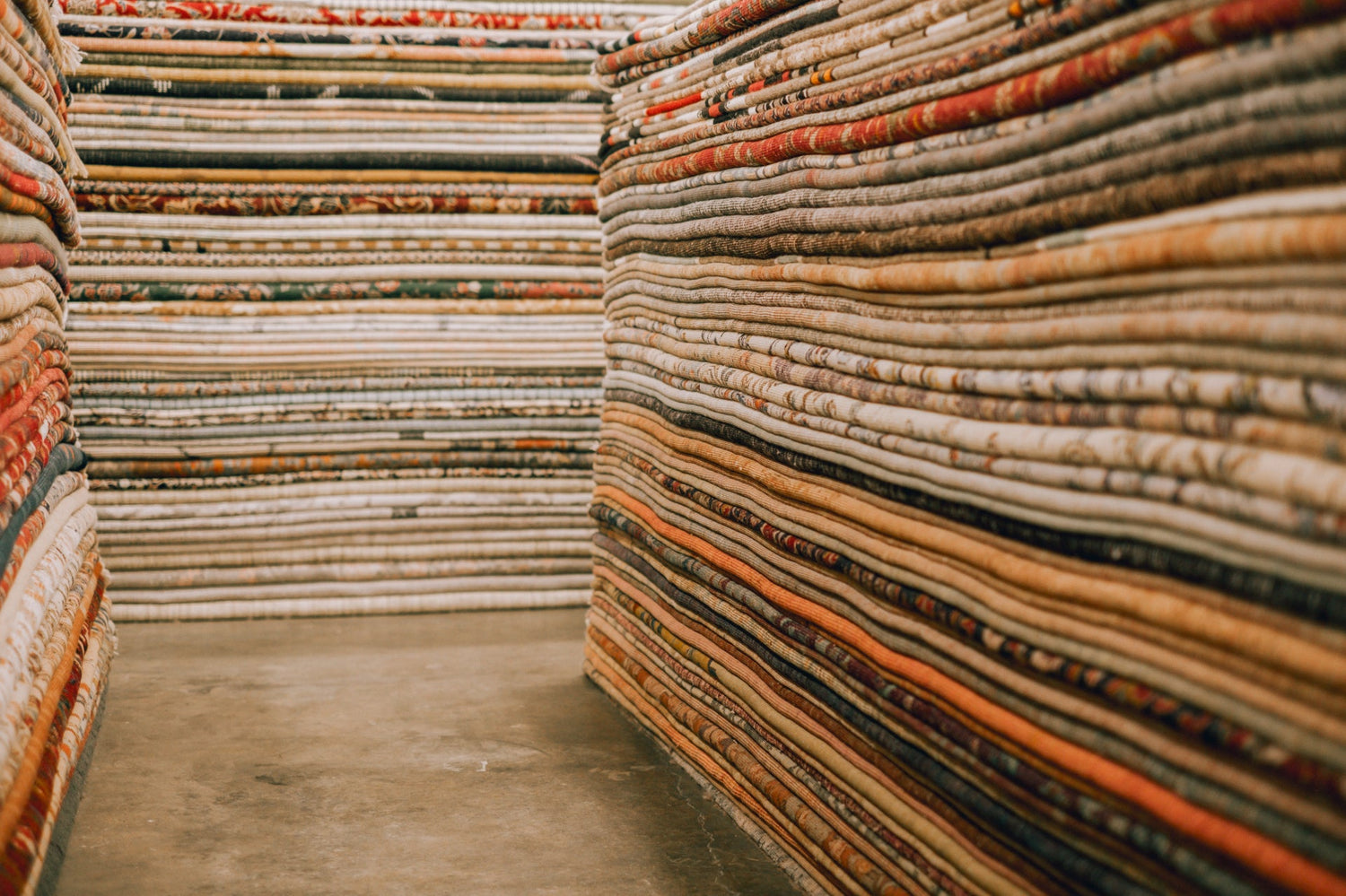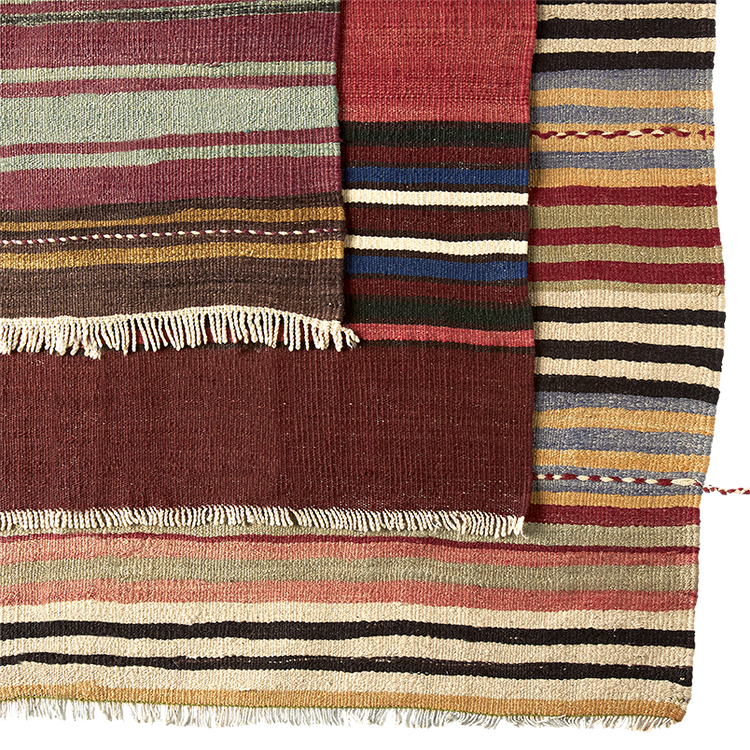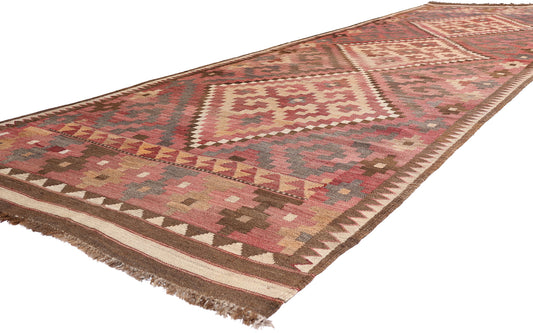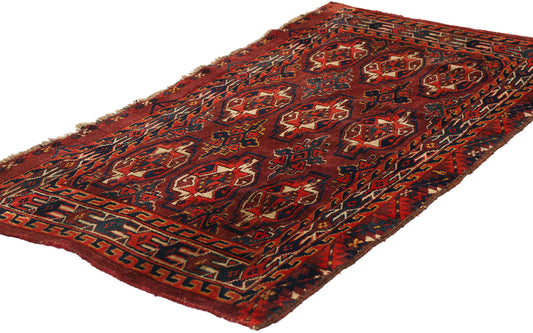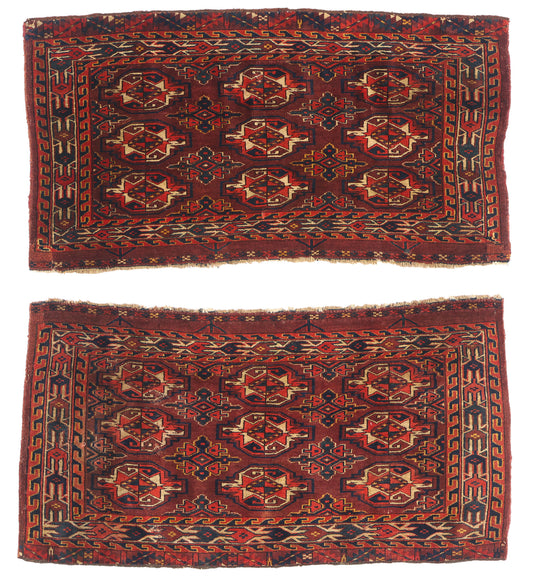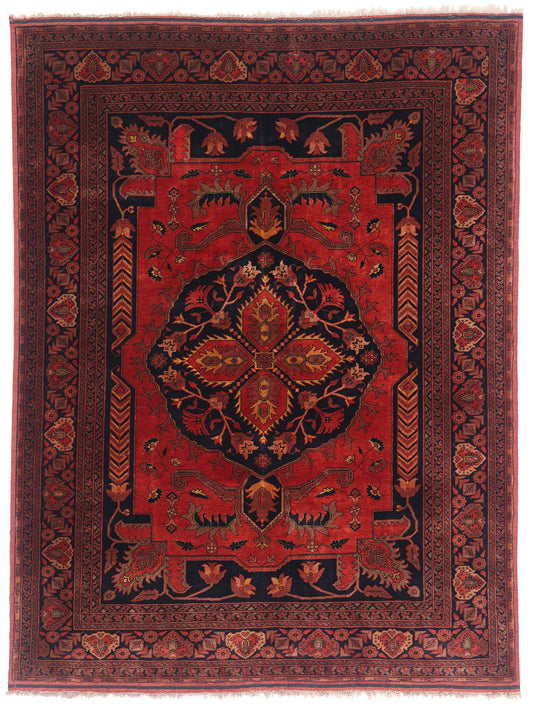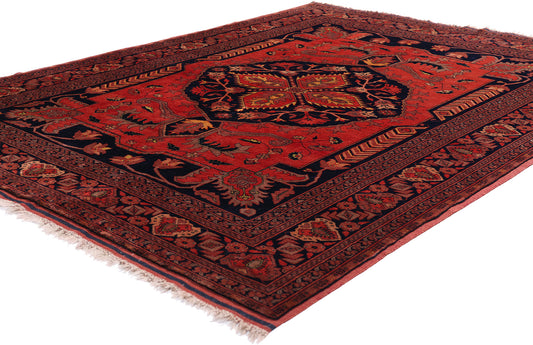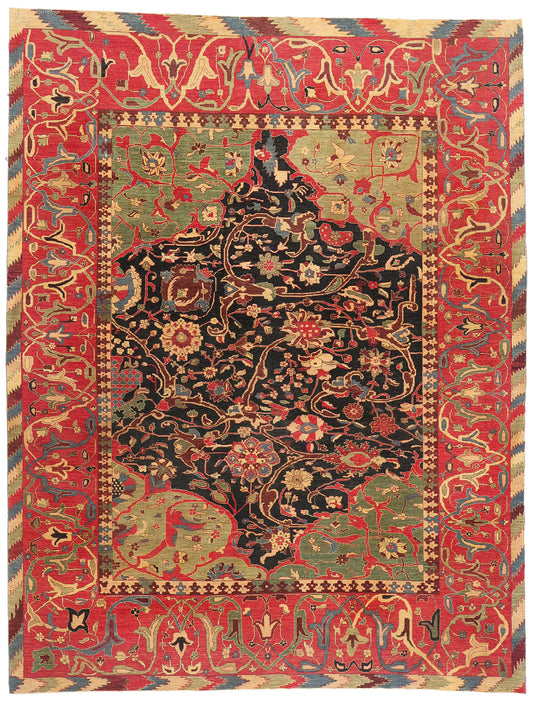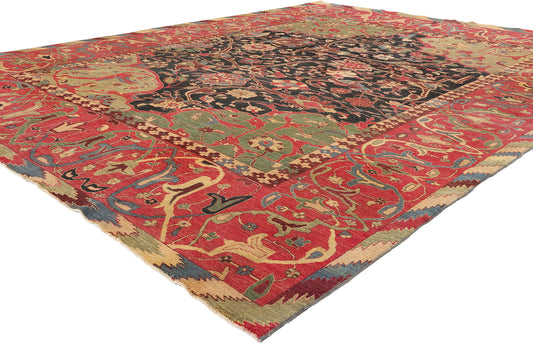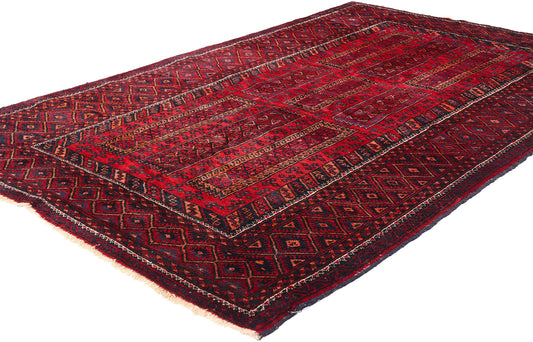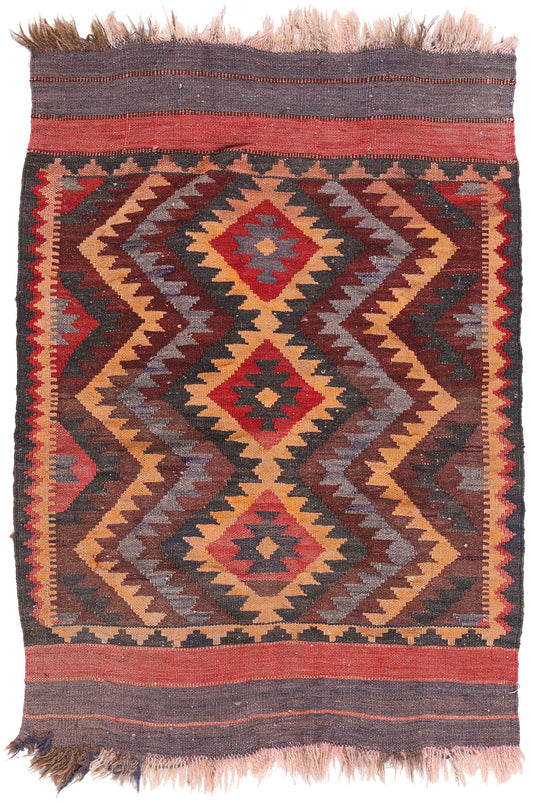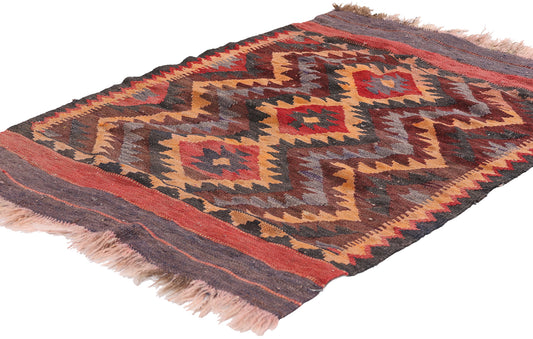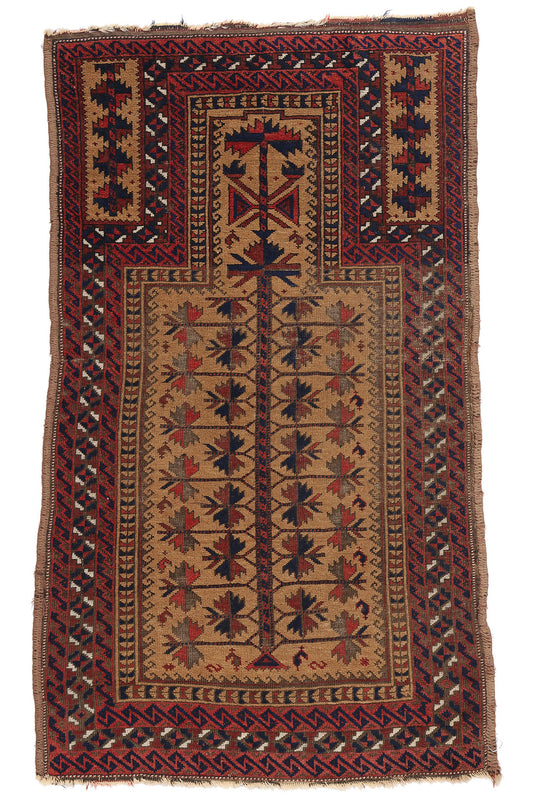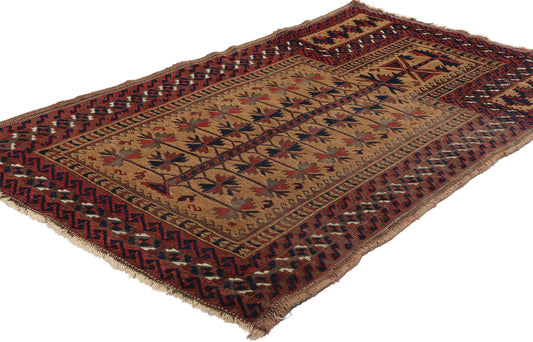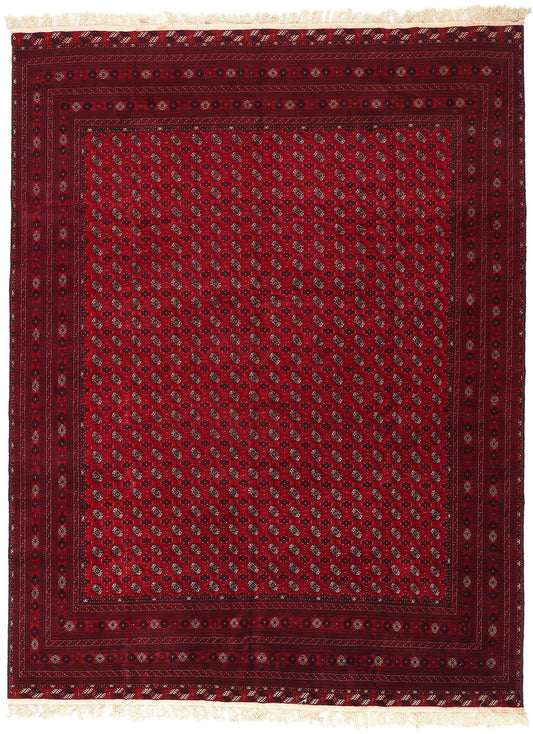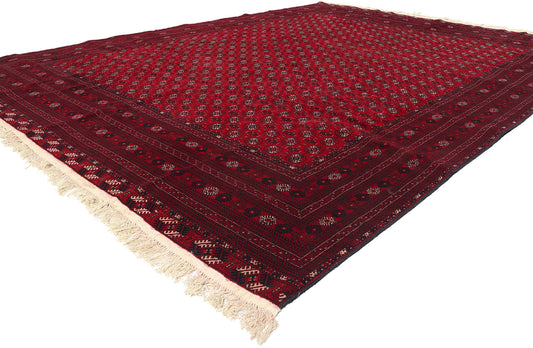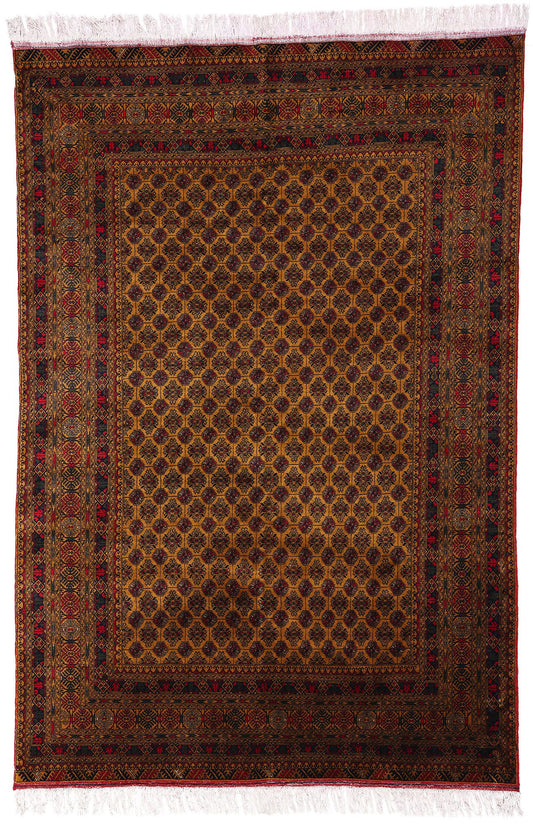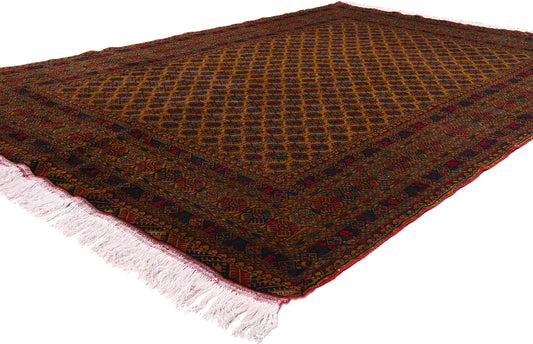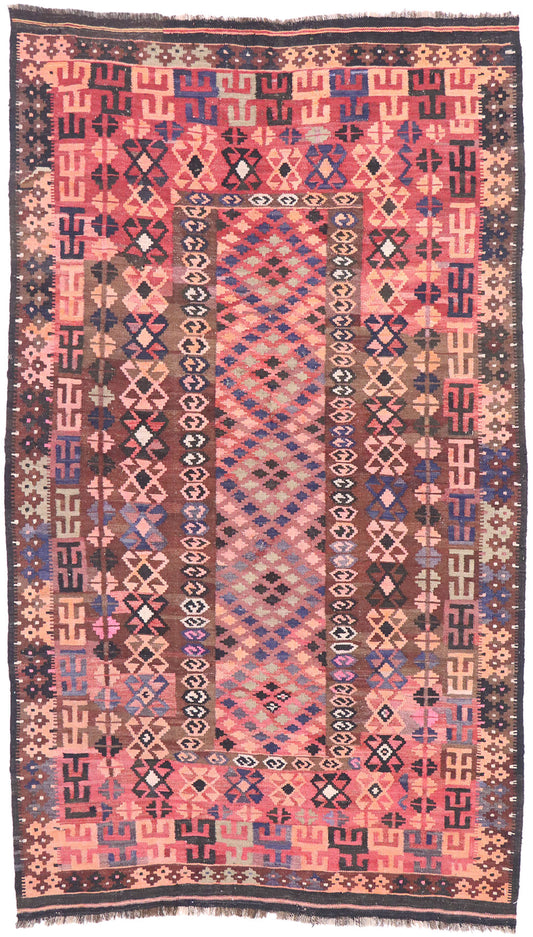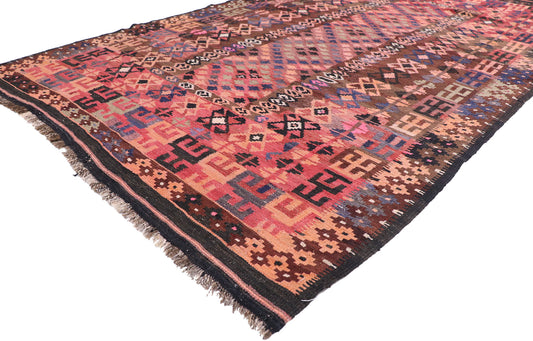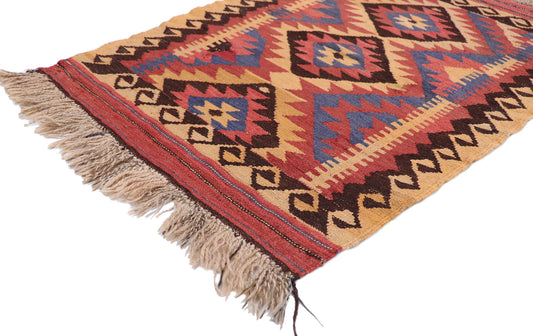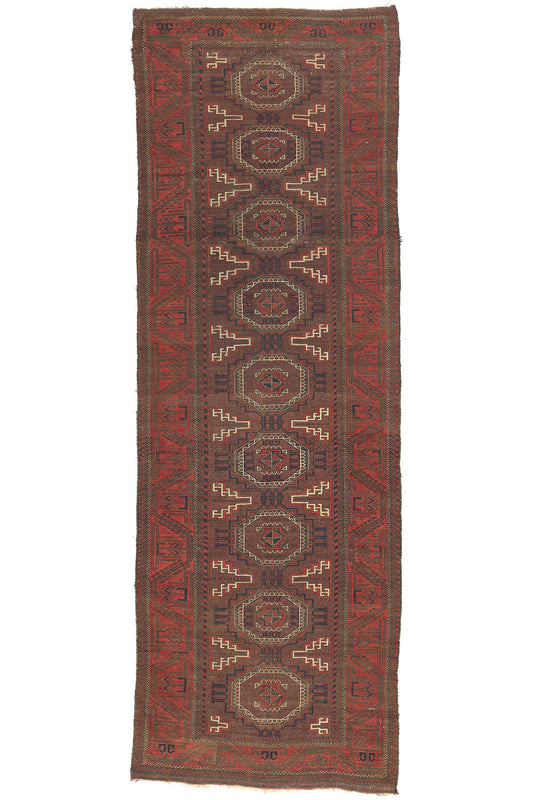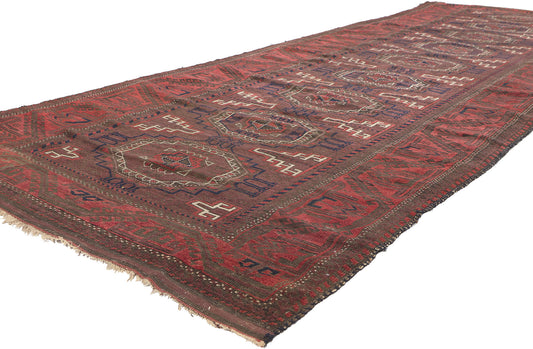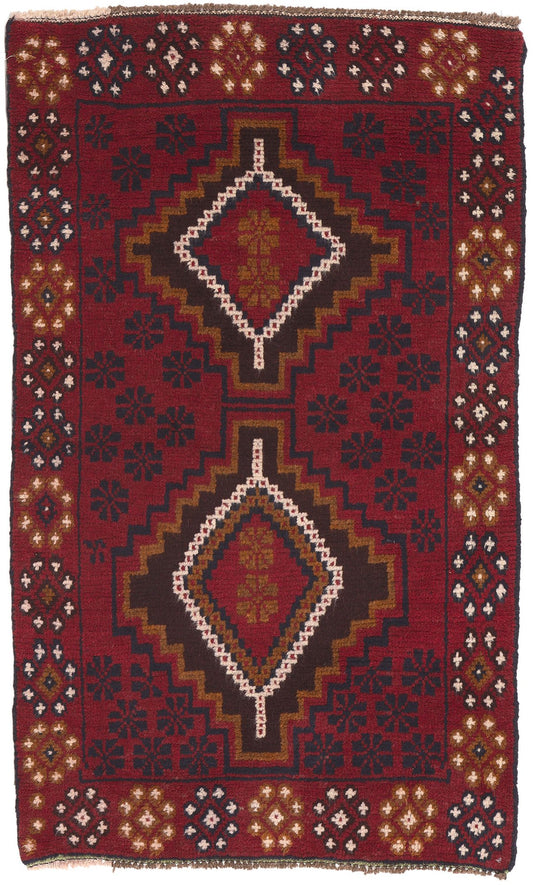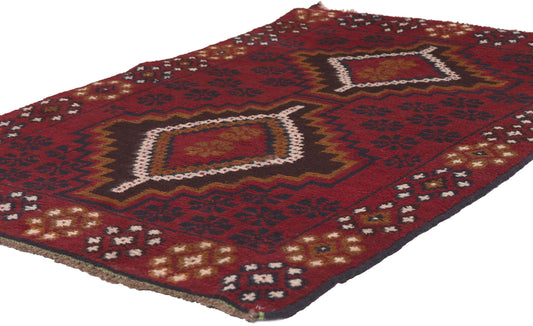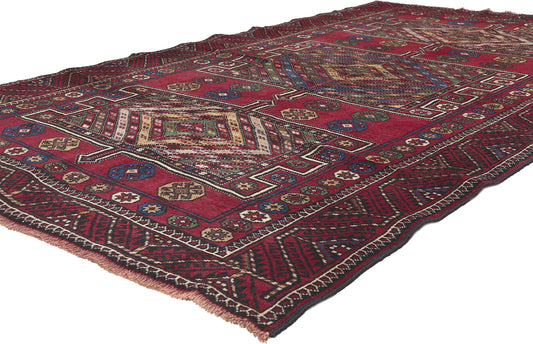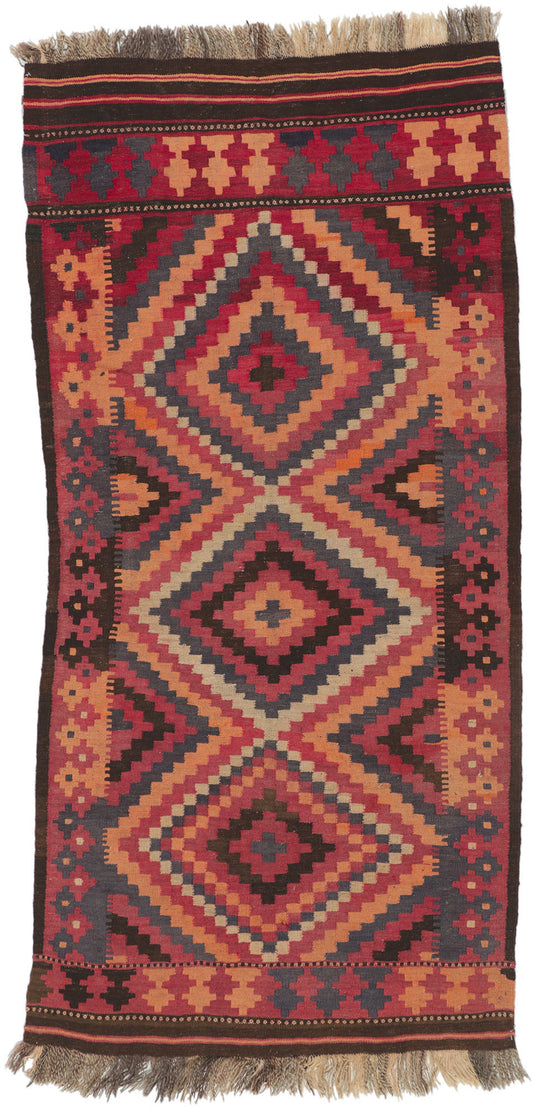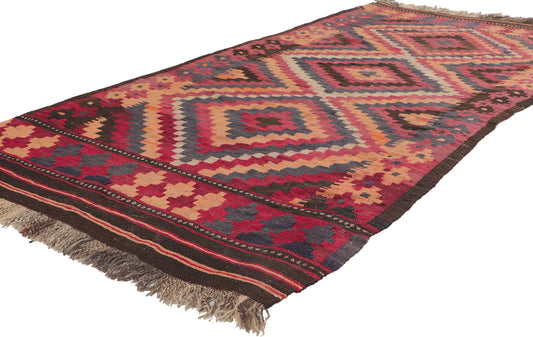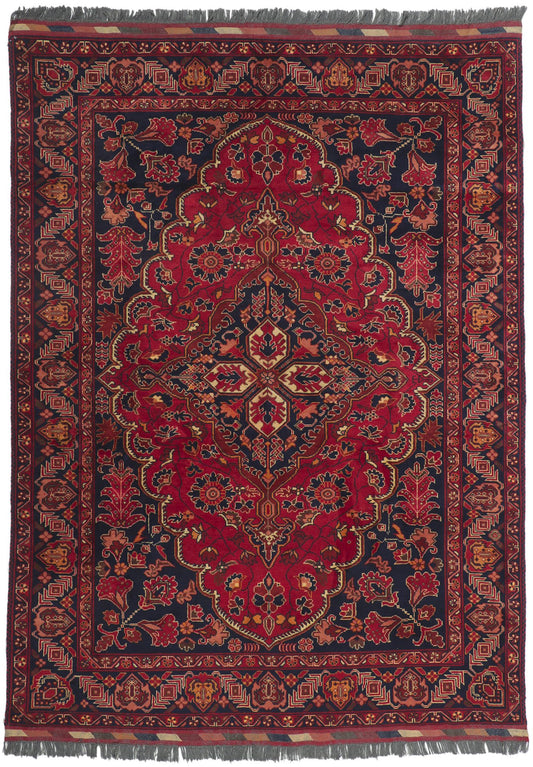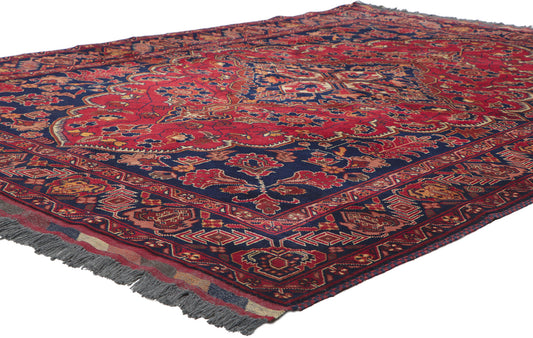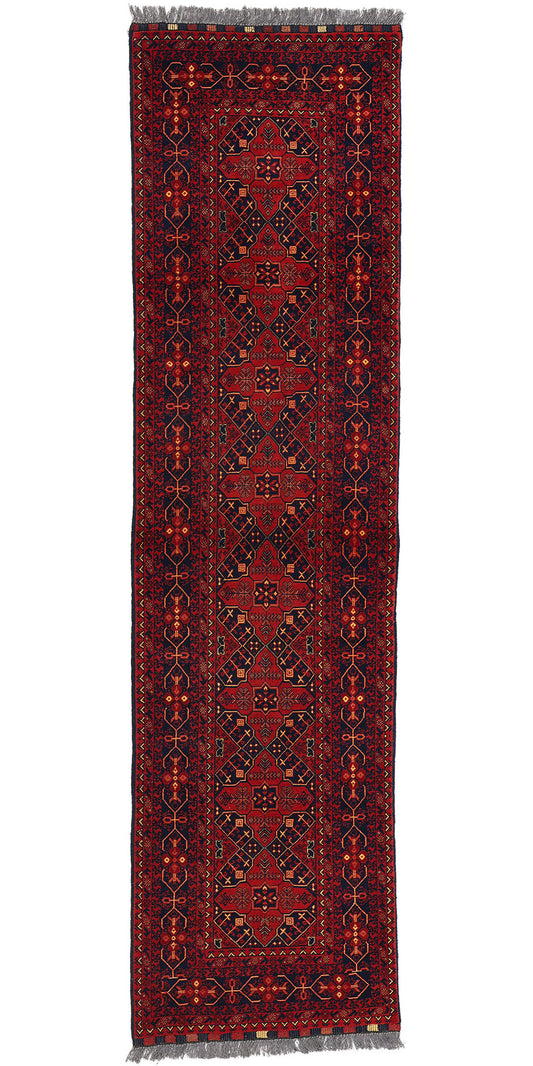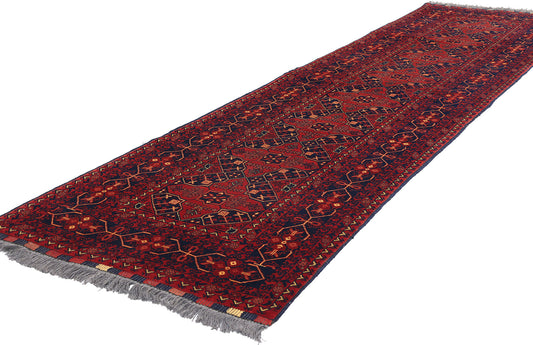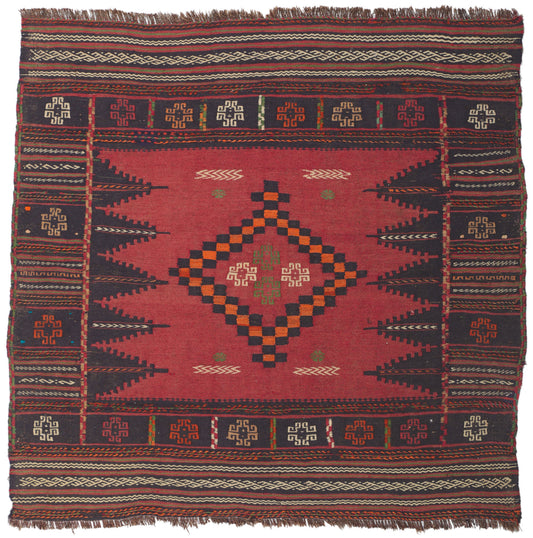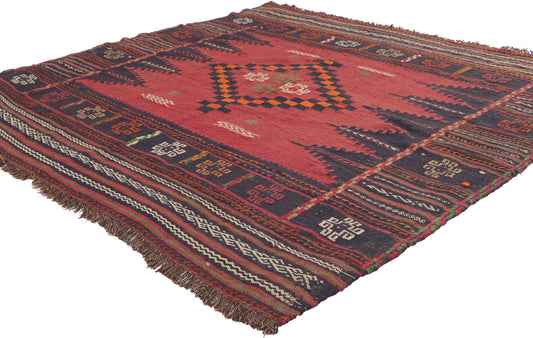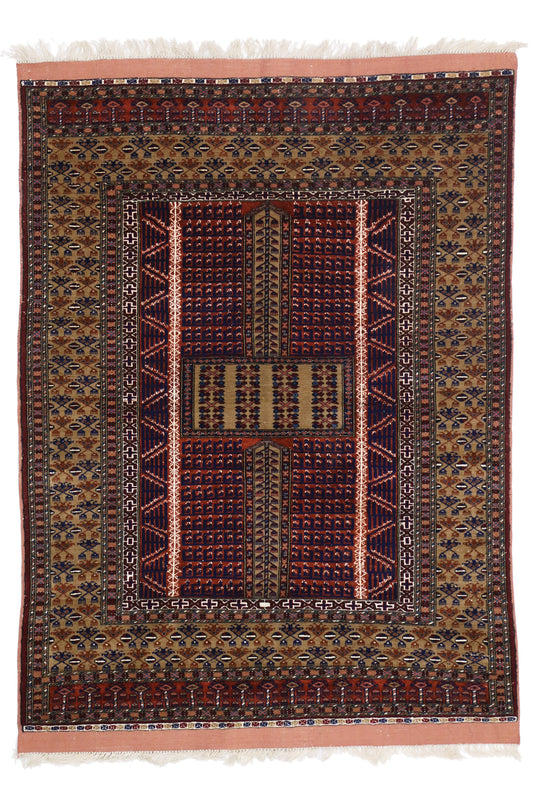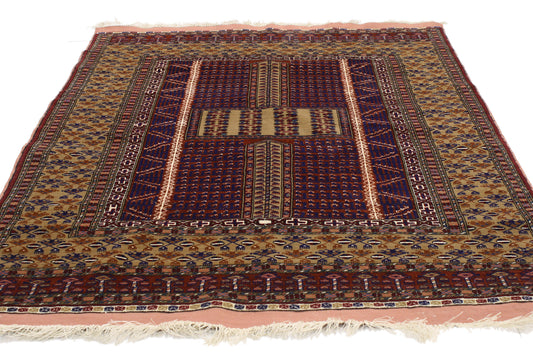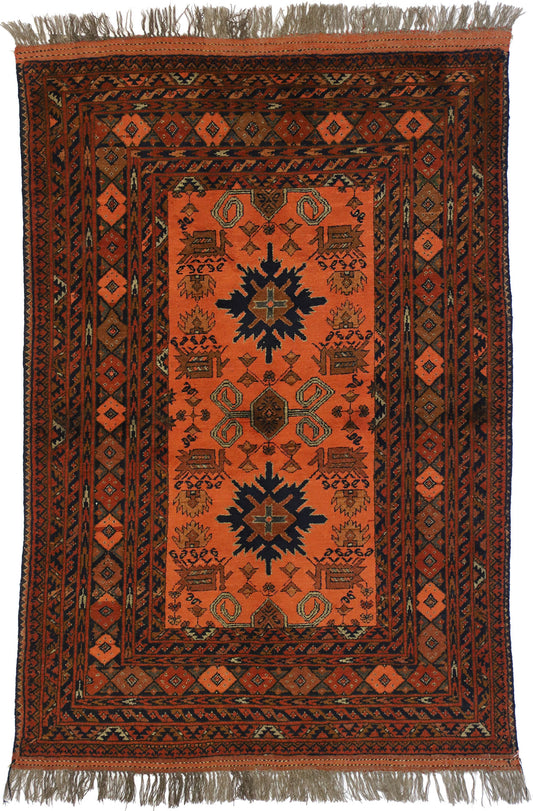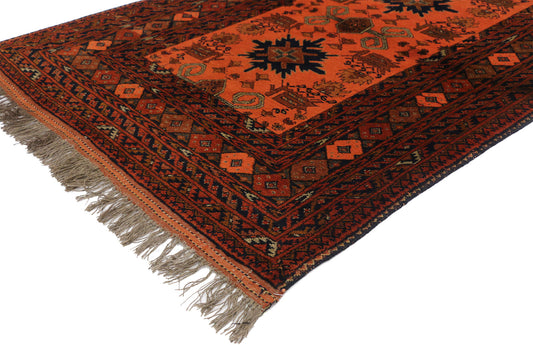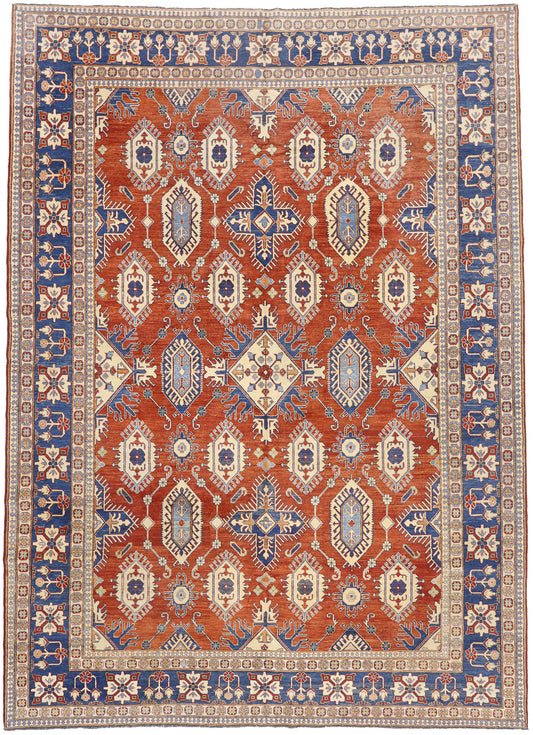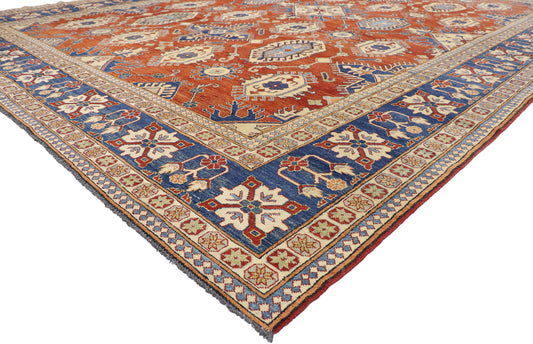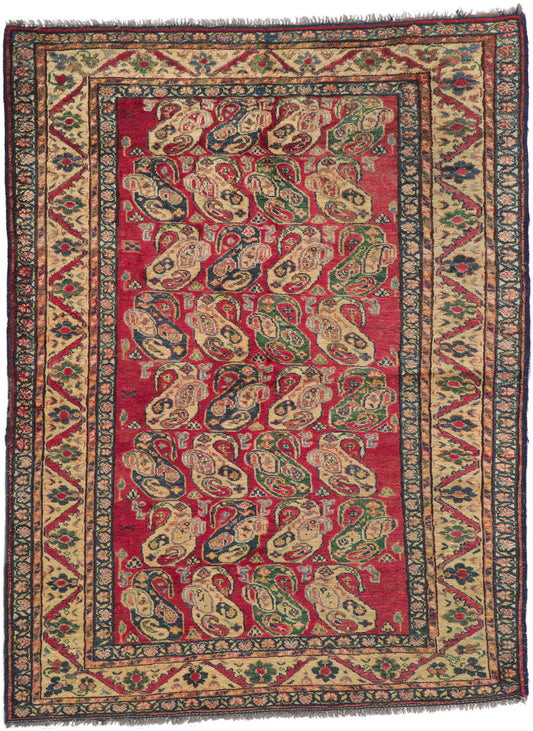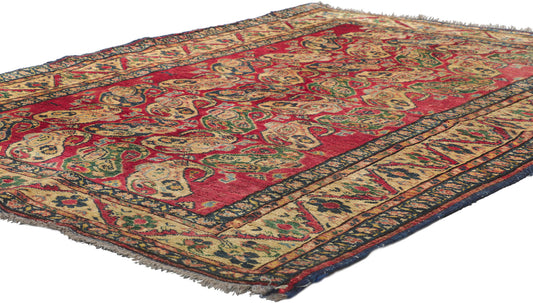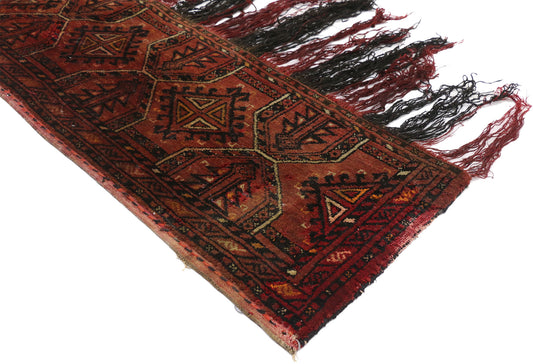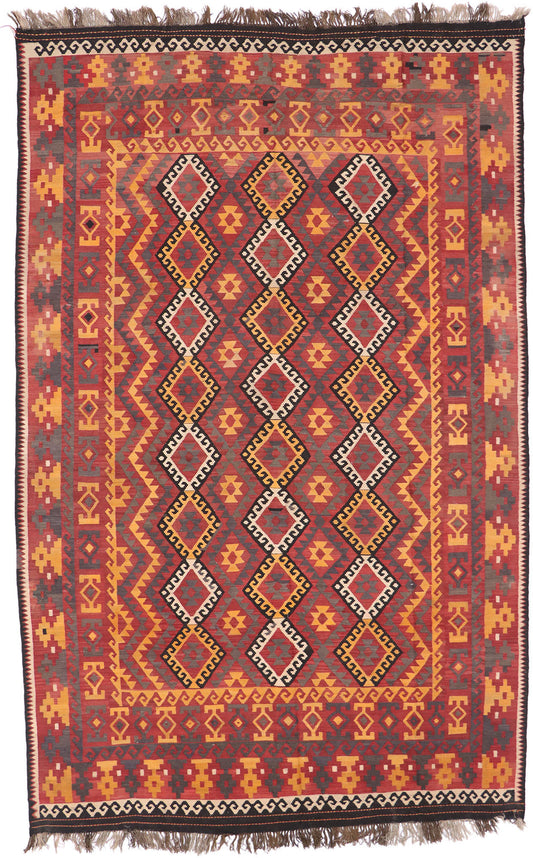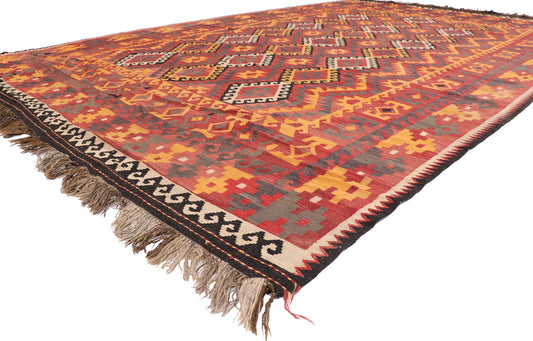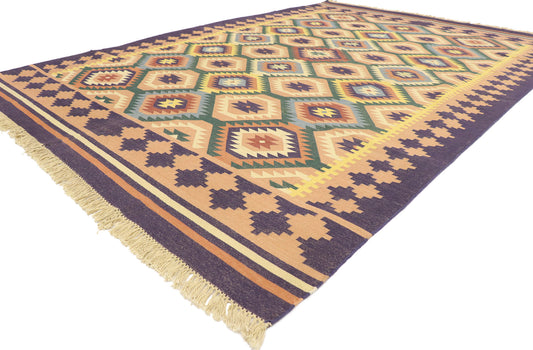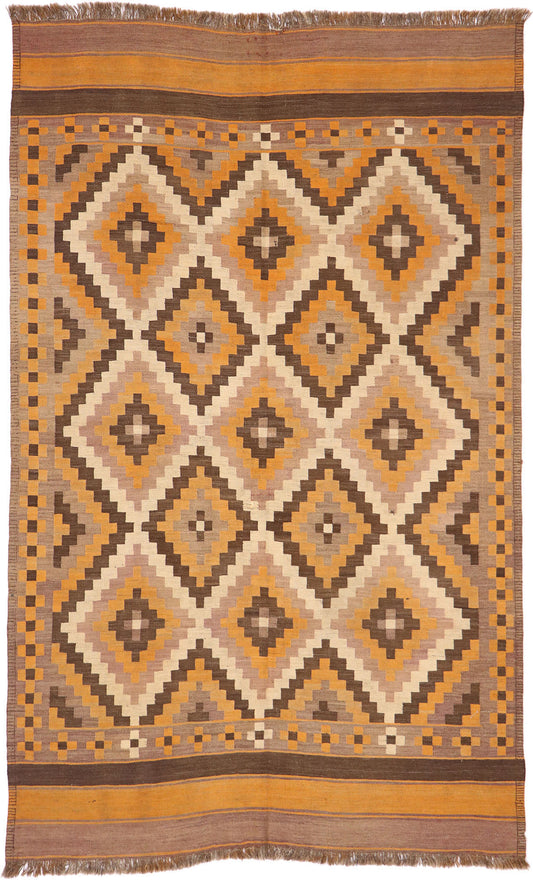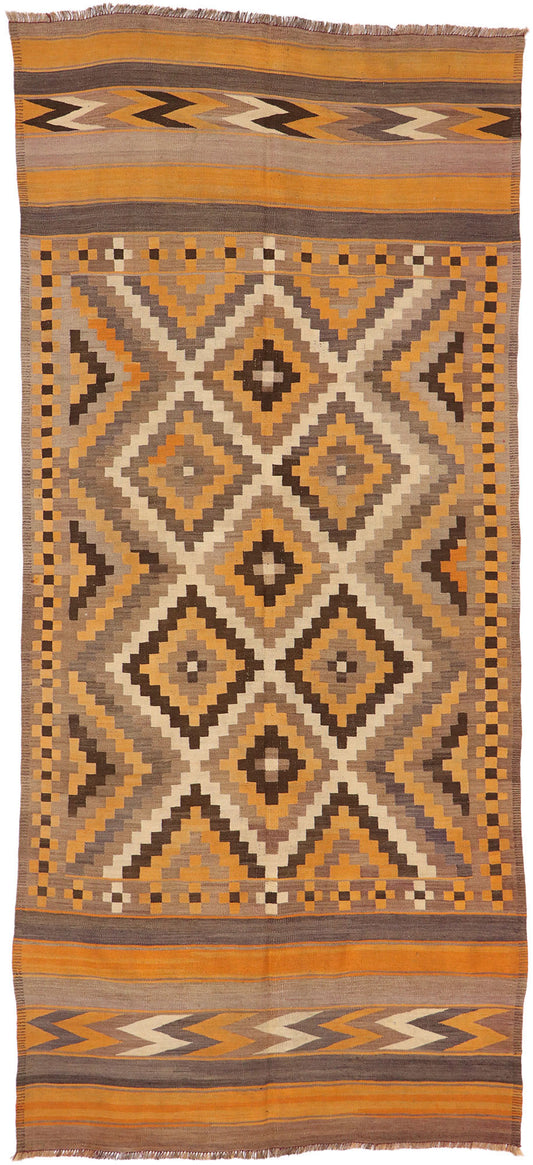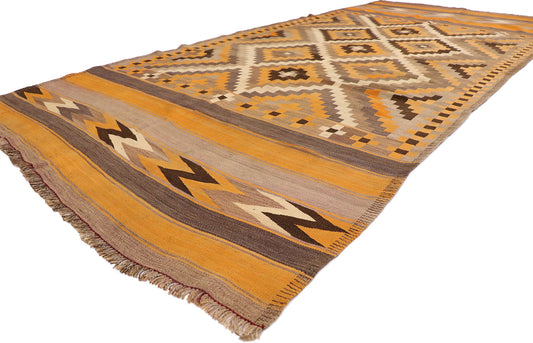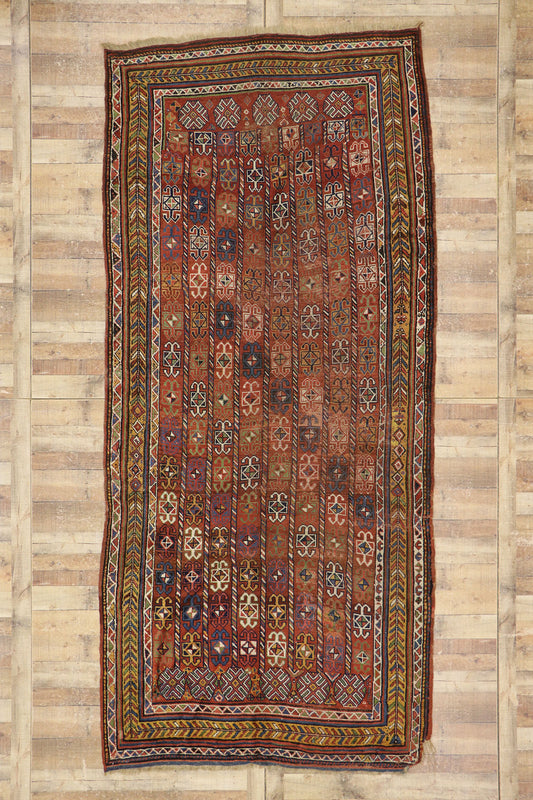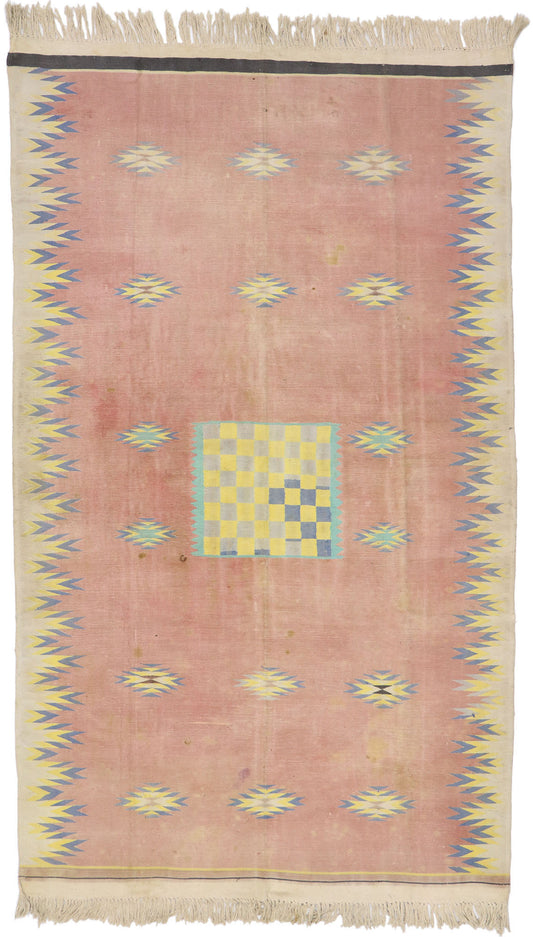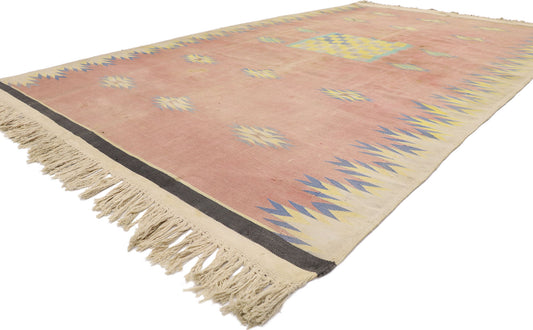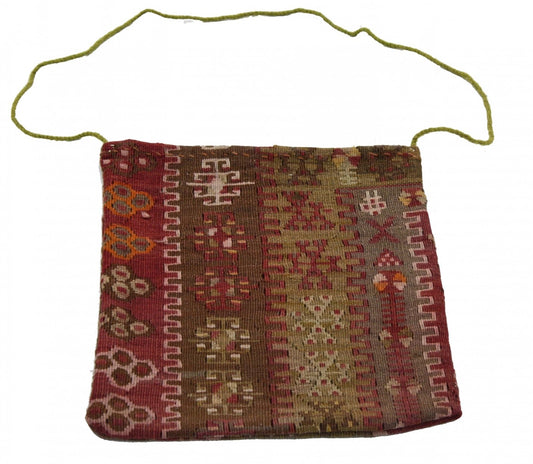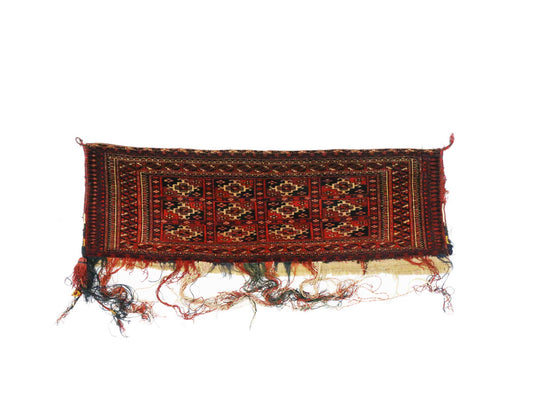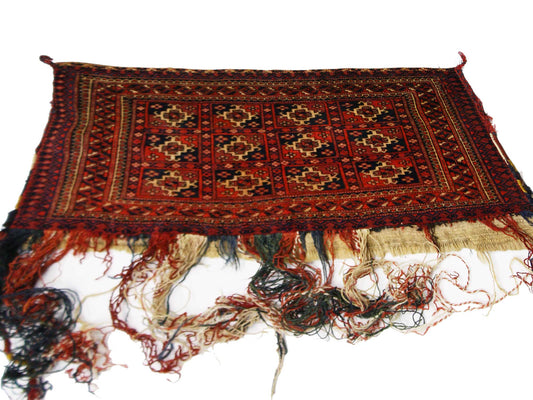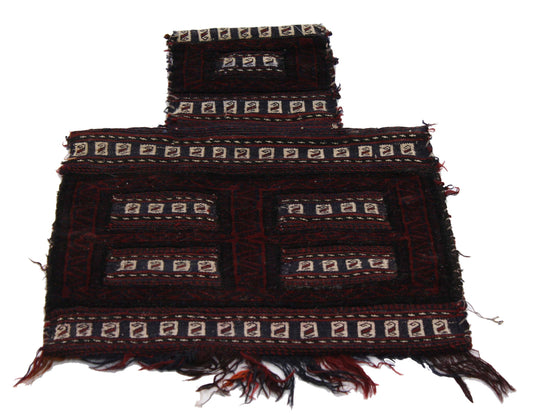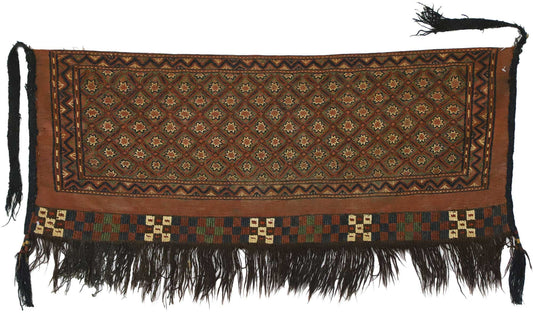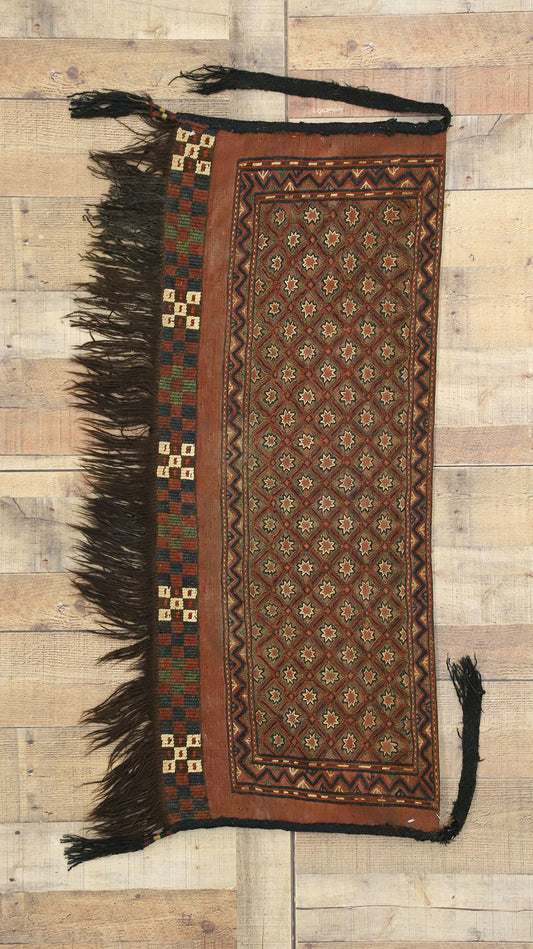Maimana Kilims: Afghan Weaving With Endless Possibilities
Our vintage Maimana Kilims showcase the versatility of these traditional woven treasures. These kilims aren’t limited to floor coverings. Use these beautiful pieces as:
- Wall hangings
- Decorative pillows
- Headboard upholstery
- Bench coverings
Afghan Rugs: Made by Skilled Artisans
Rug makers have crafted these pieces for centuries. They continue to do so today, often working in homes or workshops. Many artisans employ hand-spun, vegetable-dyed Afghan wool, while others work with mill-spun yarns and synthetic dyes to achieve different effects. From medium and coarse weaves to non-pile flat rugs (kilims) and hand-knotted Afghan wool rugs, the craftsmanship of weavers reflects a deep commitment to tradition and artistry.

Authentic Rugs from Afghanistan: Handwoven Treasures for Sale
Esmaili Rugs is committed to preserving the diverse blend of Afghan traditions by offering a stunning selection of authentic Afghani carpets and kilims, including:
- Baluch prayer rugs and carpets
- Ersari rugs
- Maimana Kilims
- Khal Mohammadi
- War Rugs
- Herat
- Kabul
By choosing these Afghan rugs, you not only bring home a piece of history but also support the artisans who continue to create these masterpieces.
The Allure of Antique Baluchi Rugs
Baluch rugs are celebrated for their stunning color combinations and unique wool quality. While prayer rugs with stylized “tree of life” motifs are well known, Baluch weavers also created a wide variety of designs, including geometric patterns, repeating guls, and diamond lattices. Our online gallery showcases a curated collection of Baluch rugs for sale, offering a wide range of dark-toned options that can lay the foundation for a warm and cozy room.
The Rich Heritage of Turkmen & Tekke Rugs
Turkmen rugs, woven by tribes such as Tekke, Ersari, Yomut, Saryk, and Salor, are renowned for their deep colors and fine, dense weaving. These Central Asian tribal rugs have the unique ability to infuse coziness, drama, and elegance into nearly any interior. Our selection of these antique and vintage carpets invites you to immerse yourself in the rich heritage of these pieces.

